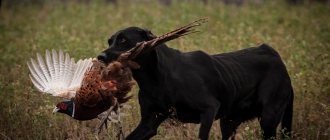Buying a four-legged pet is a very exciting and joyful event. The variety of breeds available is amazing, but sometimes leads to a dead end. Understanding which dog to choose, especially if you've never had one before, is not at all easy.
Each animal has its own advantages and disadvantages, so too impulsive decisions often end in separation. To avoid bad experiences, it is recommended to fix the minimum requirements for a future family member and evaluate your capabilities.
What can happen?
A high school student got a boxer, a cheerful, healthy dog. For two years they were quite happy together. Then the young man left to go to college in the capital, and gave the dog to his grandmother. After a short time, the dog died of melancholy.
A Muscovite built a dacha and got an Alabai puppy to guard it. While it was summer, the puppy was running around the yard, and everything was going great. But what to do in winter? The dog was taken to the city, but it turned out to be impossible to keep the grown giant in the apartment.
In the yard where the garages are, they put a shed with a lattice and put the dog there. He spent several months in this prison until animal rights activists rescued him, forcing the owner to sell the dog.
How many similar situations are there that no one knows about? Only those who choose the right breed of pet are guaranteed to avoid such a scenario. In order not to make a mistake, you need to take into account a lot: both in your ward and in yourself .
Age
The age of the animal is also very important. The most optimal is 2-3 months. At this point, the puppies begin to feed themselves and receive all the necessary vaccinations. Thanks to this, they can more easily tolerate separation from their mother and become less vulnerable to infections.
A later age is recommended for large dogs, as they take longer to develop and often remain puppies for up to 2 or even 3 years. There is no need to rush if you plan to take your pet to dog shows or introduce him to breeding. Compliance with the standard and championship makings are difficult to track until 6-9 months, so a puppy adopted too early may not meet your expectations in the future.
Size
Of course, size matters.
Dwarf and small
If the dog will live in an apartment, in a small room, it is probably better to choose a dog of a small or medium breed .
Small breeds include:
- dachshund,
- Yorkshire Terrier,
- Russian toy terrier,
- Pomeranian Spitz,
- chihuahua,
- pug,
- Papillon,
- maltese dog,
- Brussels Griffon,
- king charles spaniel,
- beagle,
- shih tzu,
- Pekingese,
- Japanese Chin,
- miniature pinscher,
- Chinese Crested Dog,
- Sheltie,
- Italian Greyhound,
- Scotch Terrier.
All these dogs are not too different in size from a cat, and the Chihuahua and Pomeranian are even smaller.
A dog whose weight is up to 8-10 kg is a small breed.
Average
Medium breeds:
- likes,
- hounds,
- cops,
- spaniels (the most popular in our country are the English cocker spaniel and the Russian spaniel),
- terriers,
- boxers,
- various sled dogs (for example, huskies and malamutes , Samoyed dogs),
- labrador retrievers,
- divers,
- swiss mountain dog,
- bobtail,
- chow-chow,
- bull terrier,
- Keeshond (Dutch Spitz),
- Dalmatian,
- setters (Irish, English and Scottish),
- collie,
- English bulldog,
- doberman,
- Miniature Schnauzer.
True, Collie, Doberman, Mountain Dog, Diver, Malamute, Samoyed, and Miniature Schnauzer are sometimes classified as large breeds, since they are noticeably larger than the bulk of dogs of medium breeds.
There are about 200 such breeds in total.
Dogs weighing from 8-10 to 25-30 are considered medium.
Big and large
Large breeds:
- German,
- East European and Caucasian Shepherd Dogs,
- Russian and Afghan greyhounds,
- Alabai (Central Asian or Turkmen Shepherd Dog),
- Akita Inu,
- various mastiffs (for example, Tibetan and Neapolitan),
- Saint Bernards,
- Komondor,
- giant schnauzer,
- rottweiler,
- Airedale,
- Irish Wolfhound,
- different mastiffs (German, Danish, Bordeaux),
- pyrenees mountain dog,
- american bulldog,
- Leonberger,
- Moscow watchdog.
It is generally accepted that a dog weighing over 30 kg is large.
Such dogs are suitable for those who live in private, country houses . In addition to the need for space to walk, these wet-nosed friends have a serious appearance and are quite hostile to strangers, which makes them excellent guards.
Large dogs are excellent companions for walks, hikes, and jogging together, which means they are quite helpful in your recovery and weight loss.











